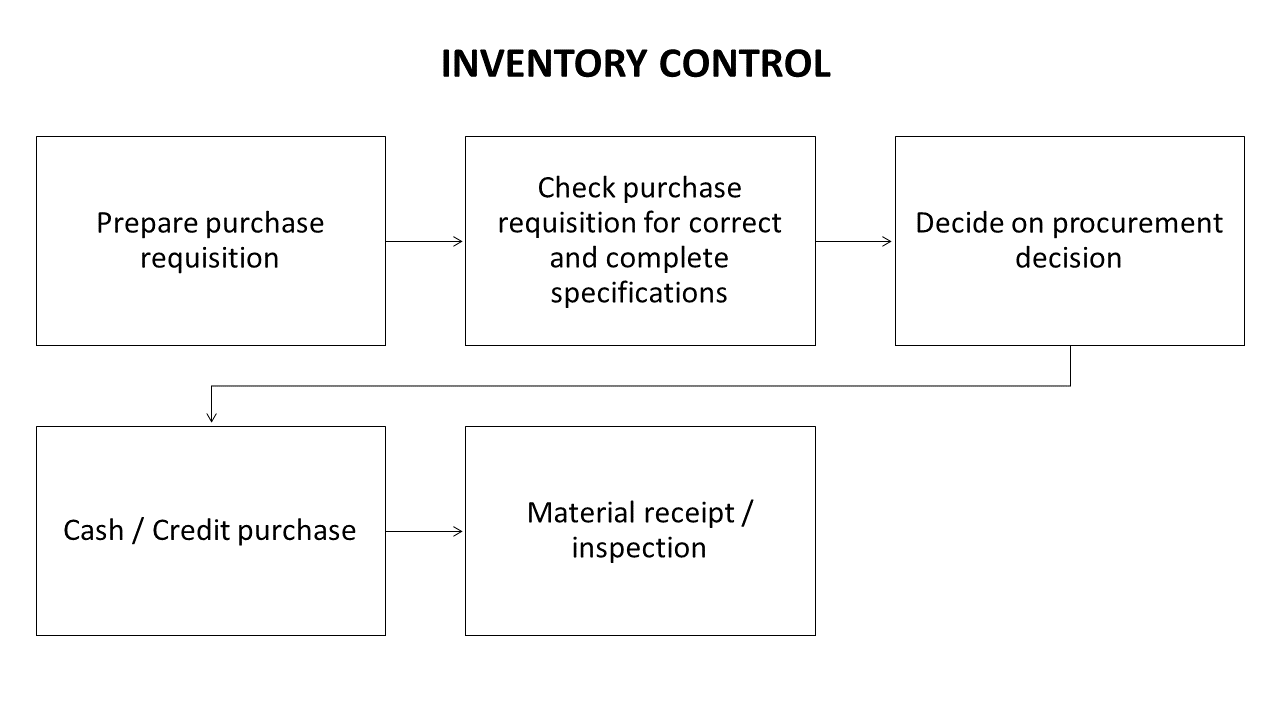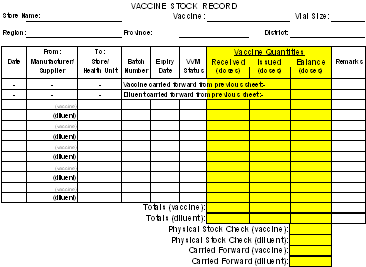
Purchase Requisition
| Company Name |
PR No. _______ |
||||
|
PURCHASE REQUISITION |
Date: ________ |
||||
|
Requesting Department: ________________________________ |
|||||
|
Item # |
Qty |
Ref # |
Description |
Purpose |
Price / Unit |
|
|
|
|
|
|
|
|
|
|
|
|
|
|
|
|
|
|
|
|
|
|
|
|
|
|
|
|
|
Deliver to: ____________________________ |
Required date of delivery _______________
|
||||
|
Suggested Suppliers: _________________________________ _________________________________ _________________________________ |
Signed
Approved
|
||||
Types of material required:
- Raw materials for producing the end product
- Spare parts for repair and maintenance
- Consumables for repairs and maintenance of machinery and also for support functions necessary to run the farm such as cleaning materials for up-keep of the buildings
- Uniforms and safety gadgets such as helmets, shoes and goggles etc for the safety of persons
Stock Levels
Stock levels must be kept as low as possible in order that the costs of holding them are minimised. At the same time, stocks must not be allowed to run out. If they do run out production is halted. A number of factors influence stock levels:
The nature of the product. For example, is the stock perishable? It is not practical to hold large amounts of stock that will go off very quickly.
The facilities are available. For example, the more warehouse space you have the more stock you can hold.
Suppliers. For example, how often do they deliver and how reliable are they? If they deliver frequently and are reliable the farmer will not have to hold so much stock because they know they can rely on prompt delivery of more stock if needed.
Stock holding costs. For example, if stock is expensive to hold due to special requirements such as having to be kept refrigerated or under security, then only a small quantity will be held.
Lead time. This is the amount of time it takes for an order to be delivered and ready for use. If the lead time is fairly long the business will hold more stock so they can continue to operate while waiting for fresh deliveries to arrive.
Stockpile. Farmers may build up stock to deal with seasonal demand.
Minimum Stock Levels
It is the level below which the inventory is not allowed to fall.
Maximum Stock Levels
It is the inventory level beyond which the stock level is not allowed to exceed.
Safety Stock
It is the level of inventory that is to be maintained always to take care of unforeseen factors.
Re-order Point
It is an important tool for controlling inventory and ensuring that there is no stock out.
Re-order level
- Crossing the maximum level means overstocking
- When the inventory level goes below the minimum level, it could result in stock out
- A reorder point is set between these two set points, i.e. the maximum and minimum level of inventory
- Order for material is placed when the re-order point is reached
- The reorder point is set in such a manner that ordered material is received before the stock level reach the minimum stock level
- An order is placed for the working quantity of the material
- On receipt of material, the stock level of inventory jumps to the maximum level
REMEMBER!!
For good stock control, it is advisable to have separate books, ledger sections or stock cards for each type of vaccine. If a book is used to record vaccines, label each section of a ledger clearly with the vaccine type. Enter each delivery of each vaccine in the record system as it is received. If stock cards are used, open a new card for each new delivery and record only one vaccine batch or lot on each card.
If a consignment of vaccine is received in dry ice, the shipment should always arrive with the correct quantity of diluents for reinstituting the vaccine when it reaches the user. For such shipments, the following details must also be checked and recorded for the accompanying diluents:
- The type of diluents (i.e., for use with which type of vaccine)
- The quantity received (in doses)
- The diluents manufacturer
- The expiry date(s)
Counting And Recording Stock Issued And Received On A Record Sheet
The figure below is an example of a stock record for vaccines and diluents used for an animal farm. The record clearly indicates the store’s name and location, the batch number, the expiry date and the quantity received and issued. This record shows the volumes that remain and this enables the storekeeper to determine when to re-order stock. These records also act as a record for volumes used over time.
Example of a stock record sheet or card for vaccine and diluents for animals:
